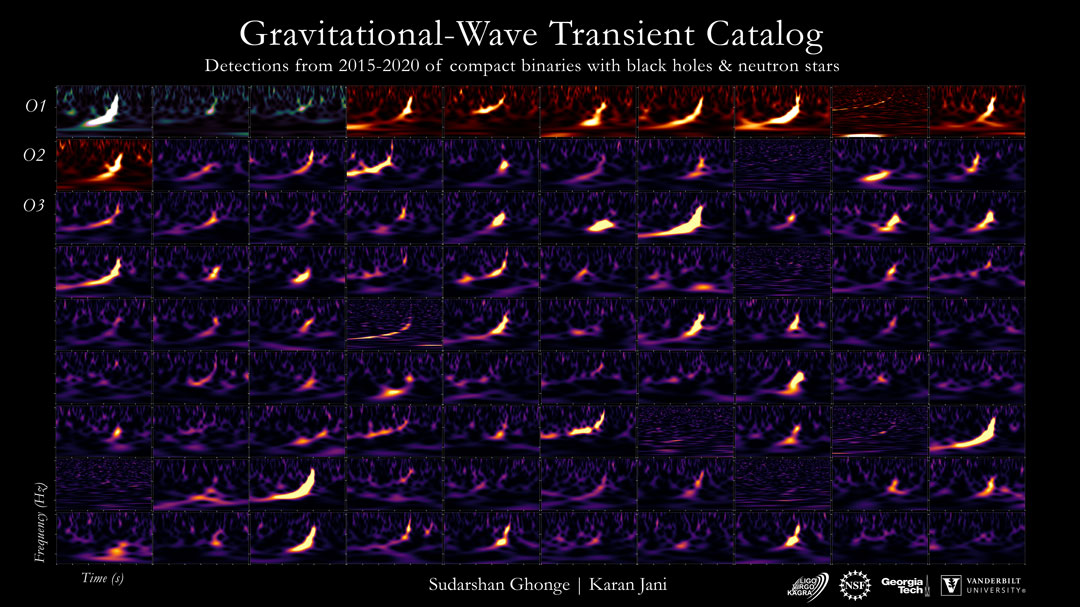2021年12月07日
Ninety Gravitational Wave Spectrograms and Counting
Image Credit: NSF, LIGO, VIRGO, KAGRA, Georgia Tech, Vanderbilt U.; Graphic: Sudarshan Ghonge & Karan Jani
Explanation: Every time two massive black holes collide, a loud chirping sound is broadcast out into the universe in gravitational waves. Humanity has only had the technology to hear these unusual chirps for the past seven years, but since then we have heard about 90 — during the first three observing runs. Featured above are the spectrograms — plots of gravitational-wave frequency versus time — of these 90 as detected by the giant detectors of LIGO (in the USA), VIRGO (in Europe), and KAGRA (in Japan). The more energy received on Earth from a collision, the brighter it appears on the graphic. Among many science firsts, these gravitational-radiation chirps are giving humanity an unprecedented inventory of black holes and neutron stars, and a new way to measure the expansion rate of our universe. A fourth gravitational wave observing run with increased sensitivity is currently planned to begin in 2022 December.
Tomorrow’s picture: comet tails
九十例引力波的频谱(持续增加中…)
影像提供: NSF, LIGO, VIRGO, KAGRA, Georgia Tech, Vanderbilt U.; Graphic: Sudarshan Ghonge & Karan Jani
说明: 每回当二颗大质量黑洞互撞时,都会在引力波段对宇宙发出洪亮的啁啾声。不过直到最近的这7年,人类才有能侦测这种不寻常啁啾声的科技,并在短短的头三个观测季里,侦测到大约90个事件。上面这些以引力波频率(垂直)及时间(水平)为轴的图板,呈现由LIGO(美国)、VIRGO(欧洲)、及KAGRA (日本)这三座庞大阵列所测到的90个事件之频谱图。此外,在上面的图板里,地球接收到的事件之碰撞能量愈高,对应的频谱愈明亮。这些事件所带来的科学创新,包括重力辐射啁啾,让人类有前所未有的管道计数黑洞和中子星,新的方法量测宇宙膨胀率。预定会使用较高灵敏度仪器的第4个引力波观测季,目前规划在2022年的12月起动。
明日的图片: comet tails



